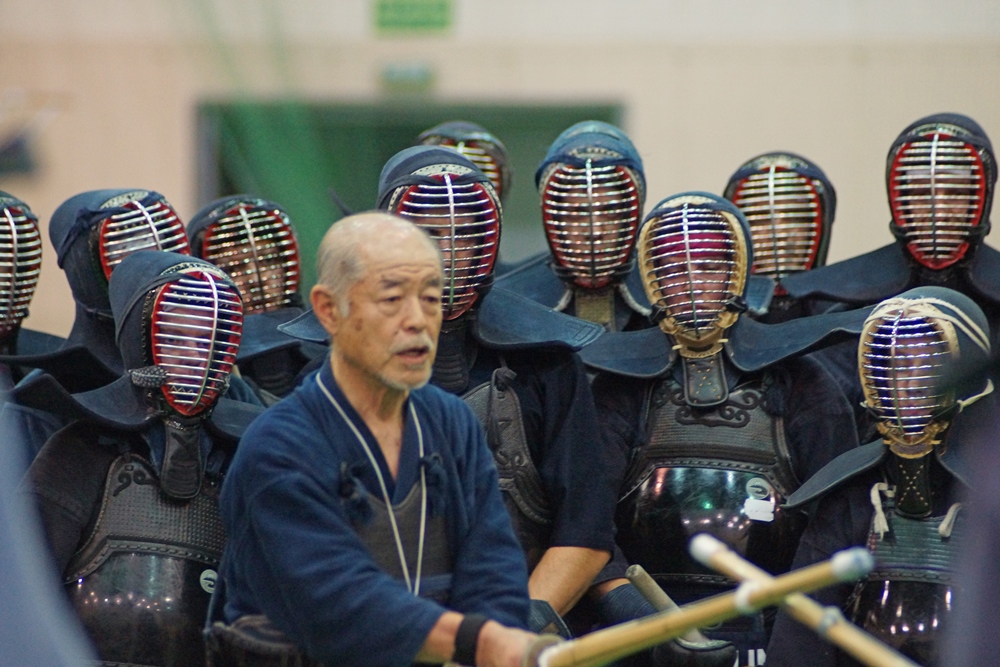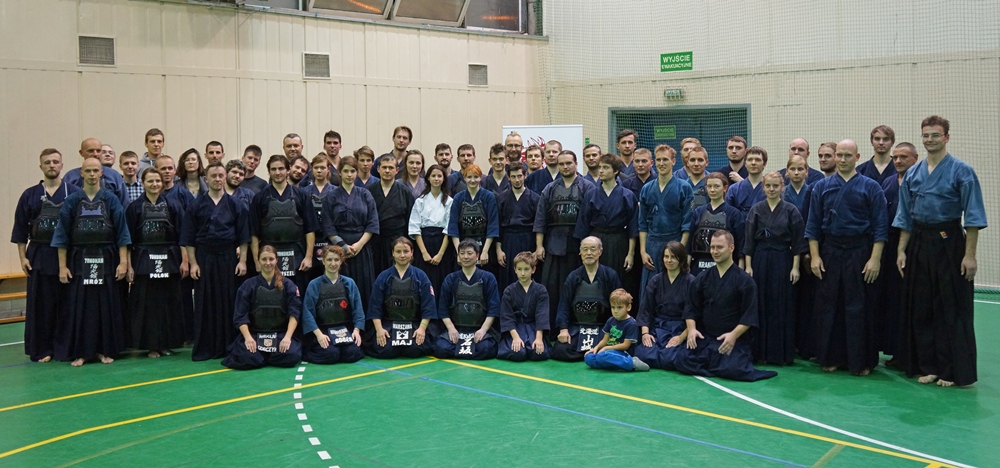Column
ColumnA Rich Experience of the Nami Martial Arts Festival and Kendo Practice Exchange Sessions in Poland
Preface
I was recently blessed with the welcome opportunity to visit the Poland-Japan Friendship Foundation Nami. With gratitude for this good fortune, I report below on our practice sessions.
The local training hall where we regularly practice is home to the morning practice sessions (on Tuesday, Thursday, Saturday and Sunday) held by the Sapporo Kendo Association and practice sessions of the Hokkaido Kendo Club. This is where a year ago began my relationship with Julian Górski, who visits Japan annually to throw himself into such training sessions with enthusiasm. He was a lively presence at our social gatherings where we review how practice sessions might have gone better, and here the opportunity to visit Poland became a topic of discussion. This year I decided to make the trip.
As one with little skill in foreign languages, it was heartening to have join me as my partner on this trip the skilled linguist and sixth-rank kendo practitioner Hidefumi Ishizaka, and it is thanks to him that I achieved my objectives on a pleasant and unforgettable journey and gained valuable experiences. As well, I have heartfelt gratitude for the immeasurable kindnesses of the EU-Japan Fest Japan Committee.
The objectives of the Ryushinkai society established within the Poland-Japan Friendship Foundation Nami are 1) to popularize Japanese martial arts in Poland, 2) to foster martial artists, and 3) to work for improved competitive tournaments. I was deeply impressed to read these words in Julian’s introductory essay: “Kendo strongly embodies the spirituality and traditions of Japan. It is the Japanese martial art for which I hope many people will come to appreciate this.”
What Japan has gained from the beneficences and massiveness of scientific civilization are not only the advantages of greater convenience and comfort; the evil of self-indulgence has also taken root and negative social conditions overlaid by traces of anxiety grow increasingly chronic. Although national policy is to make the martial arts compulsory in the school curriculum and provides a framework of cooperation with organizations involved with the martial arts, it does not seem quite to be meeting expectations. It is a difficult time for the martial arts to find receptivity with the general public.
The time is coming when kendo too will be expected to make its own social contribution in Japan, playing a greater role than that of associations formed solely of devotees, but this work is slow to gain momentum.
In Poland, where there is a deep love of Japanese culture, I would like to express my profound respect for the attitude towards martial arts and activities of the Poland-Japan Friendship Foundation Nami, where practitioners engage in kendo practice sessions taking earnest pleasure in the Japanese language, and for the activities of the Poland Kendo Association. They provide a perfect opportunity to reflect on our own shortcomings.
Impressions of Beautiful City of Culture Wrocław in Praise to Fellow Swordsmen
We were grateful for our warm reception at Warsaw airport by Nami Chairman Grażyna Pogorzelska, Polish Kendo Federation Secretary-General Maciej Murzyniec and Julian, whereupon Grażyna drove us the four hours to our destination Wrocław so that we reached our hotel late at night.
Next morning we strolled in the beautiful neighborhood of the central plaza with its rich colors and historic structures, and with the history of the city that we had researched on the internet now evident before us admired the advanced culture of northern Europe. Our hotel had a mood of quiet, relaxed elegance, and breakfasts were fully satisfactory in range of choice and flavor. We spent four pleasant days there.
Our stay of four days, the practice sessions, commuting to the martial arts festival and, on our first day, a walking tour of notable sights led by Julian made for a much more easygoing experience than I have had in other tourist destinations, in a fruitful and memorable sightseeing and learning experience. Everywhere I sensed a high level of history and tradition, and I became very fond of the country of Poland.
The wonderful prospect of the River Oder and the old city as viewed from the cathedral’s observation platform made an impression on me of the intelligence of the country and the beauty of its dignity. Economic security, substantial higher education, beautiful historical districts, canals, Japanese gardens, smart streetcars and buses, and the delicious flavor of restaurant meals taken at seating out front and of strawberries in the market. It was a visit that eased the heart. With its climate quite like that of Hokkaido, I would like to visit Poland and Wrocław again.
Impressions of Polish Kendo
From the photos provided by Julian and what I heard from him in Hokkaido, I understood the aims of Polish kendo to reach beyond simply engaging in competition.
First among my impressions from our six practice sessions and the first kendo tournament held by Nami was that the Polish engagement with kendo is truly admirable. True, there are few who have reached a high technical level, but their attitude to observation and earnest approach to our practice sessions led me to believe that Polish kendo students are practicing the kendo principle that kendo is of utility in personal development.
Each of our practice sessions enjoyed large and wide participation, from beginners to advanced students. Advancement in kendo involves particular methods that are effective for particular ranks, but it is essential that all continue to work together to learn what all need to know. In kendo we speak of the concept of Shuhari: Preserve, Disrupt, Transcend. Preservation is about extending the lifetime of fundamental principles. Disruption is about always maintaining a spirit of challenge. Transcendence urges one to progress through the habit of imagination while working towards the future. Kendo students should train in kendo daily with this understanding of Shuhari.
One enjoys a discipline more as one progresses to more advanced techniques. Technique has a tendency towards over-concentration on personal movement alone. In the study of true technique, however, the student should never neglect his opponent, should attach importance to breathing, spacing, opportunity and etiquette, and should bear in mind that kendo is about meeting the adversary.
Conclusion
Once the practice sessions were concluded, Nami hosted us to dinner. Whereas we two arrived ready for a social gathering, we were soon beset by questioning from all quarters and found the episode a fine present.
Here I have appended some pages of material in response to, and in gratitude for, the many questions that we were unable to answer completely that evening.
I would like to pay my heartfelt respects to the many people we met at these warm practice sessions and at the martial arts festival, and hope I can count on Nami to communicate this to them sincerely. Thank you very much.
The Principles of Kendo
The mindset to bring to kendo training is
To study kendo properly and seriously,
To season mind and body, and cultivate a vigorous spirit,
To prize decorum through the characteristics of kendo,
To strive for fidelity and devote oneself to truth,
To pursue always the cultivation of the self,
To love your country and society,
And to contribute to peace and prosperity for all peoples.
The Essence of the Shinai
The way of kendo is for the individual to form the self with the goal of unifying mind, spirit and ability by means of the shinai. The sword we call the shinai is one turned not only towards an adversary, but at the same time towards one’s own self.
A significant objective of instruction is the unification of the shinai with mind and body through this training.
Etiquette
Even in competition, kendo stresses adherence to etiquette. A significant objective of instruction in etiquette concerning the spirit and forms of respect for the other is to cultivate a moderate attitude in life and to develop the breadth of koken chiai, or the desire to achieve mutual understanding and betterment of humanity through kendo.
Lifelong Kendo
The way of kendo is one in which different generations can learn from each other. The objectives of instruction are for the student to seek his way through technique, to foster a full notion of life and to practice kendo as a cultural pursuit while enhancing the dynamism of society.











